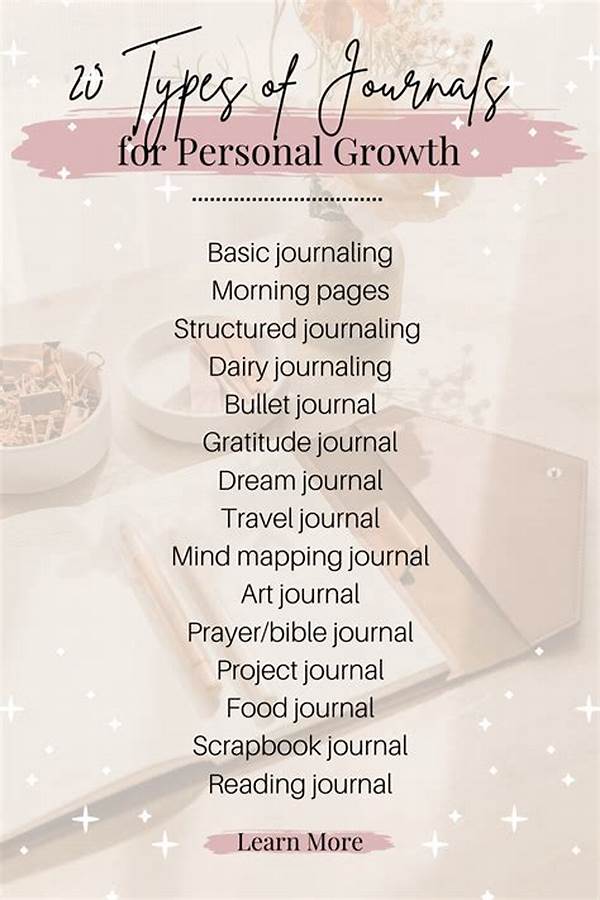H1: Top Journaling Methods That Support Study Goals
Read More : Tambakbet Shares How To Overcome Mental Fatigue Mid-study
In the bustling world of academia, where time is of the essence and focus is a prized asset, students often search for the best methods to enhance their study habits. A tool that often remains underrated is journaling. Imagine this: a personal, adaptable method to streamline your thoughts, track your progress, and ultimately, achieve your study goals. The cliché that we learn better when we record our thoughts holds a significant gravitational pull in the educational space. Journaling isn’t just about scribbling your thoughts; it’s about crafting a strategy that can elevate your academic performance. As life swirls around us with distractions creeping in from every nook, journaling stands as a faithful companion, a beacon of organization and mental clarity.
For students seeking to master their time and their studies, integrating journaling into daily routines can be a game-changer. Now, you may be wondering, “What makes journaling so special?” The answer lies in its versatility and personal nature. There are various top journaling methods that support study goals tailored to fit diverse preferences and learning styles. From bullet journals with their minimalist design to detailed study logs that capture every nuance of your learning journey, the opportunities are boundless. It’s like choosing a treasure map to navigate through your academic endeavors, ensuring you stay on course even when the seas get rough.
Journaling transforms abstract ideas into concrete plans. It’s a mental unwind station, a place where creativity meets logic, and emotions meet rationality. The balance it provides can set the stage for academic success, keeping procrastination at bay while nurturing motivation. By maintaining a diligent journal, you’re not only documenting information but also engaging in a reflective practice that could unveil insightful patterns about your study habits.
H2: Understanding the Top Journaling Methods That Support Study Goals
To fully appreciate how journaling can contribute to your academic objectives, it’s crucial to understand the various methods available. Each has unique features tailored to different aspects of studying, such as time management, comprehension, and stress reduction. It’s like having a Swiss Army knife at your disposal, allowing you to pick and choose the tool that’s right for you at any given moment.
—
Article on the Purpose of Journaling for Students
The purpose of journaling unfolds itself as you connect pen to paper—or fingers to keyboard—and begin to explore and organize your thoughts. The blank pages are your intellectual playground, ready to be filled with ideas, reminders, and plans. For students, especially in an era flooded with digital distractions, journaling is a unique selling point—a simple yet effective method to cut through the noise and focus on what truly matters: achieving study goals.
Journaling serves the primary purpose of making sense of overwhelming information, often encountered in academic settings. When coursework feels like an avalanche, journals can serve as snowshoes, allowing students to maneuver through complex concepts and dense chapters. With top journaling methods that support study goals, this ancient yet adaptable practice transforms a chaotic study session into a structured, productive one. By jotting down key points, summarizing lectures, or even sketching out mind maps, students engage more comprehensively with the material.
The psychological benefits of journaling shouldn’t be underestimated. The excitement of tracking progress, the satisfaction of crossing out completed tasks, and the motivational boost from seeing how far you’ve come are unrivaled. Journals transform from mere notebooks into trophies of personal development. It evokes a sense of accomplishment, fostering an emotional connection to one’s academic journey.
H2: Exploring Different Journaling Techniques
But how do you start? Initiating a journaling habit may feel daunting at first. Yet, starting small can lead to substantial results. A few minutes of journaling before or after study sessions can significantly impact retention and understanding. Consider it an introspective warm-up or cool-down, allowing your mind to process and internalize what you’ve learned more effectively.
H3: Implementing Journaling as a Learning Tool
Discovering the right journaling technique for you requires a bit of exploration. The options range from the traditional, where dates and detailed entries dominate the pages, to the more creative, with doodles and color-coded lists. Bullet journaling, for example, is highly favored for its simplicity and adaptability. It accommodates both succinct notes and complex organization systems, making it particularly attractive for those juggling multiple subjects and deadlines.
As students face greater pressure to excel, incorporating journaling into their study routine could be the secret weapon they’ve been missing. Reflect on questions like: What subjects challenge you the most? How can journaling help you bridge gaps in understanding? Could maintaining a journal spur greater innovation and exploration in your thought processes? With top journaling methods that support study goals, the possibilities for academic improvement are as diverse as students themselves.
—
Topics Related to Journaling and Study Goals
—
Structuring Your Journal for Maximum Impact
Dedicated students understand the importance of a well-structured journal. A disorganized journal is like a treasure chest with its contents scattered, leaving you unable to find the jewels of knowledge you seek. Structuring your journal effectively can significantly enhance its utility, transforming it into a reliable resource over time.
Begin with categorization. Segment out your journal into sections or subjects, allowing you to quickly access pertinent information without sifting through unrelated content. This might seem basic, but it’s astonishing how many fail to leverage this simple technique. Think of your journal as a library; every piece of information should be cataloged, ready to arm you for any academic battle.
Incorporate tools like indexes or color tabs. These not only make navigation quicker and more efficient but also infuse an element of creativity into your journaling process. A dash of color can break the monotony, making the process fun and engaging. Moreover, the act of adding color manually could reinforce memory retention and understanding.
Maximizing the Use of Top Journaling Methods
A well-maintained journal is not just a record; it’s a mirror of your academic journey. It documents growth and highlights areas for improvement. Through consistent use of top journaling methods that support study goals, you’ll find a significant improvement in your academic performance. Use it to set goals, celebrate small wins, and keep track of all academic assignments. It’s not just about jotting down facts but building a structured, reflective path toward your desired achievements.
—
Illustrations Related to Journaling for Study Goals
H2: Visualizing Success Through Journaling
—
As you immerse yourself in the world of academia, imagine harnessing the potential of top journaling methods that support study goals. Each illustration in your journal serves as a visual cue, a mental nudge to keep you aligned with your academic ambitions. Through these artistic expressions, complexity turns into clarity. The weight of a burgeoning syllabus feels lighter, as your journal becomes both a roadmap and a reflection mirror.
With each journal entry, you’re scripting a story—your story. This narrative isn’t just a mundane account of academic events; it’s a detailed chronicle of aspirations, challenges, and triumphs. With top journaling methods at your side, your academic goals no longer remain elusive dreams but become attainable milestones. The quiet act of journaling, unnoticed by the world, emerges as a powerful ally in your educational pursuits, painting a vivid portrait of your academic journey.


